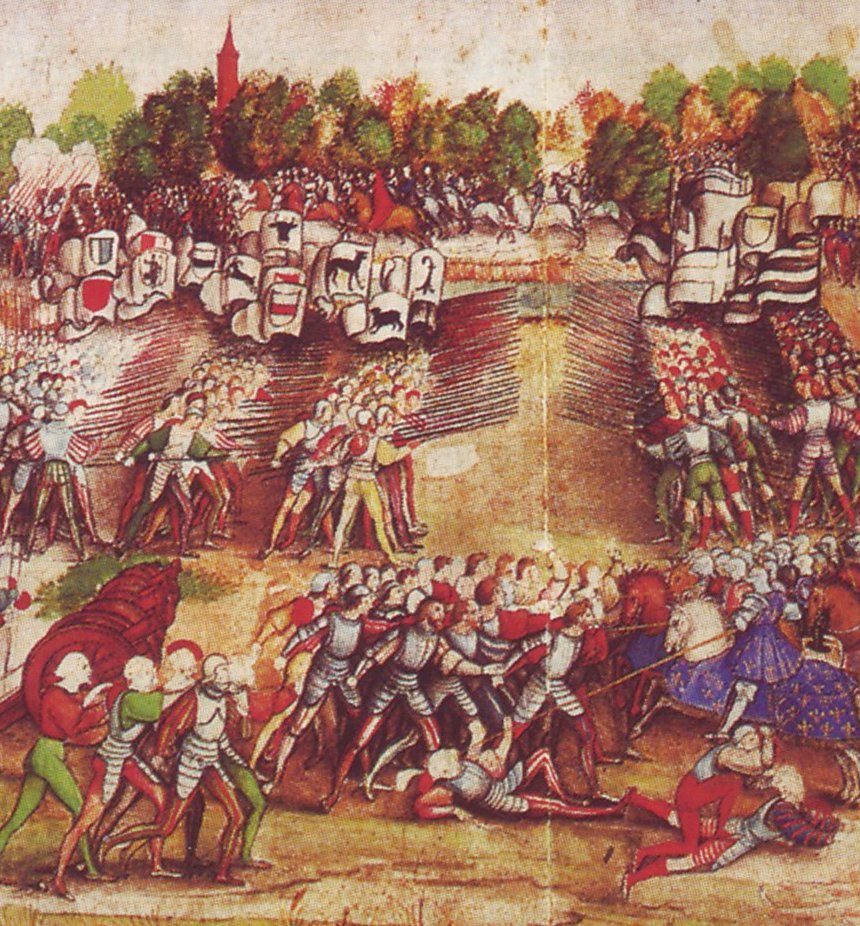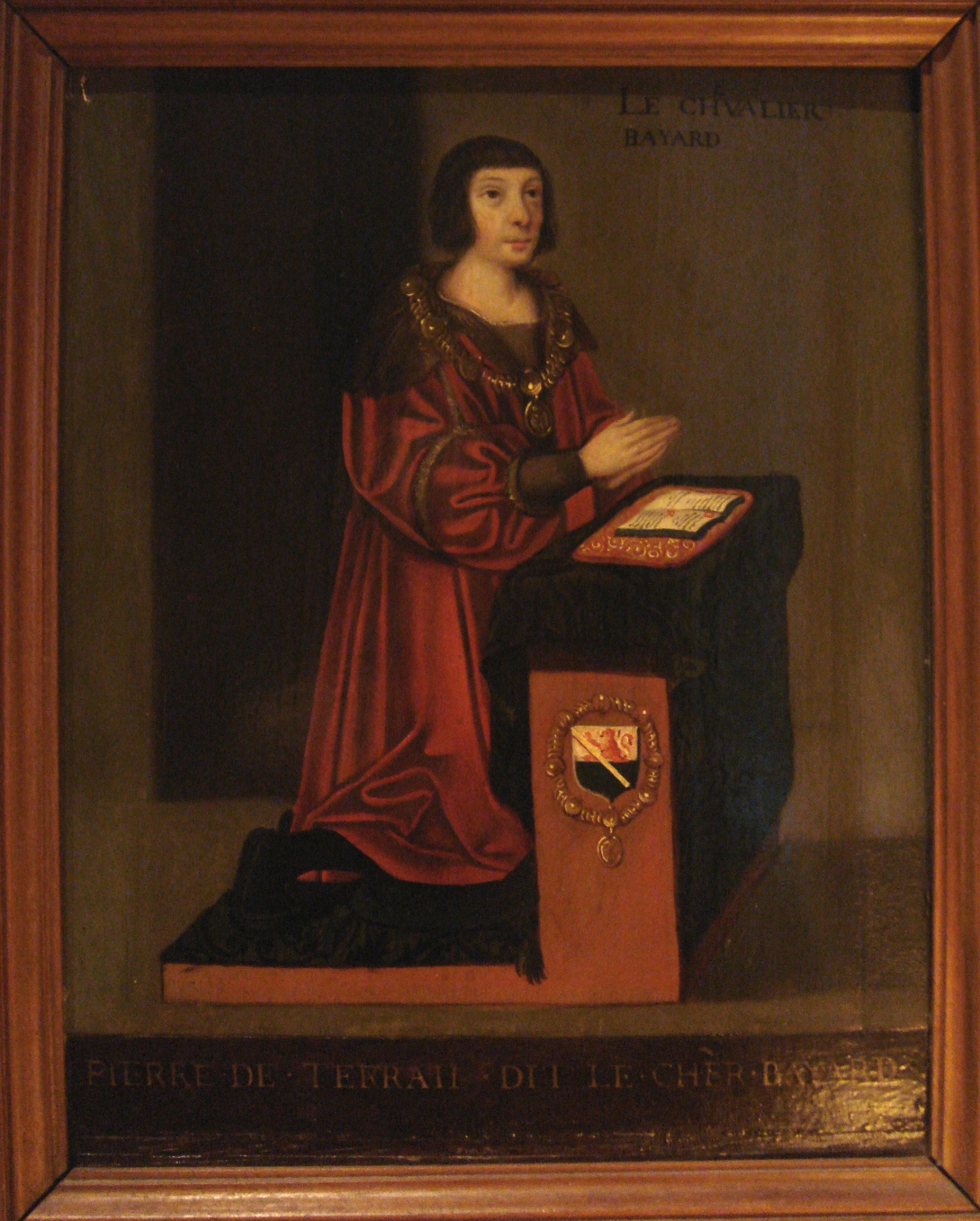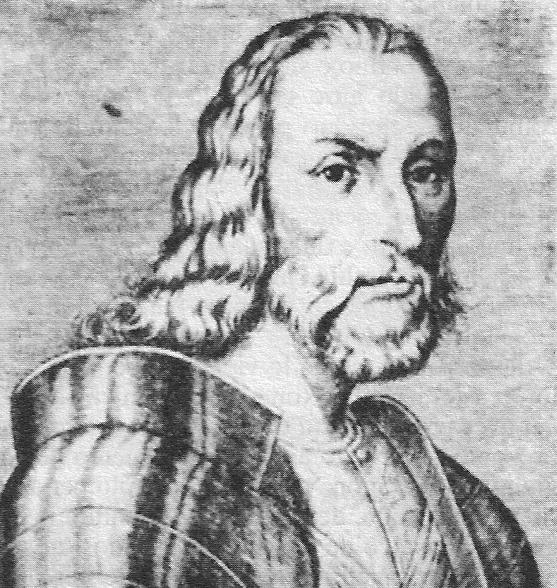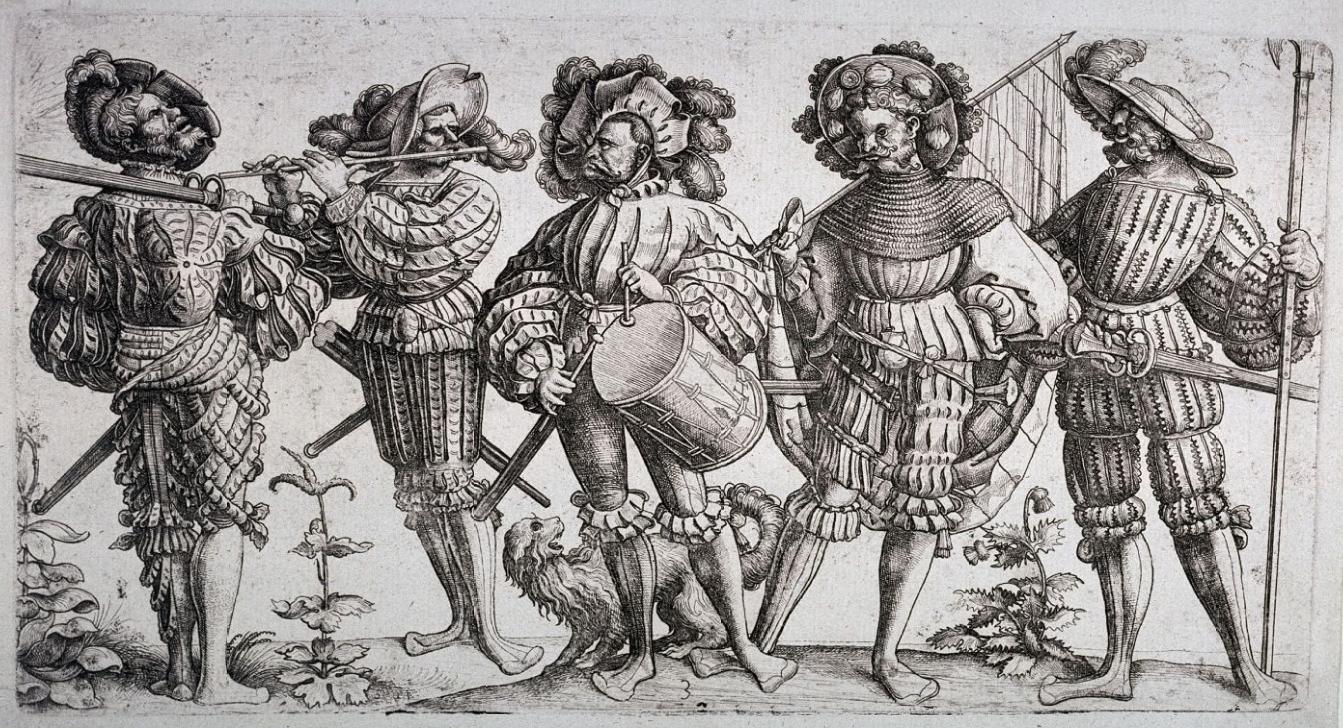|
Battle Of Marignan
The Battle of Marignano was the last major engagement of the War of the League of Cambrai and took place on 13–14 September 1515, near the town now called Melegnano, 16 km southeast of Milan. It pitted the French army, composed of the best heavy cavalry and artillery in Europe, led by Francis I, newly crowned King of France, against the Old Swiss Confederacy, whose mercenaries until that point were regarded as the best medieval infantry force in Europe. With the French were German ''landsknechts'', bitter rivals of the Swiss for fame and renown in war, and their late arriving Venetian allies. Background The campaign of Marignano followed years of Swiss successes, during which French fortunes in Northern Italy had suffered greatly. The Swiss had taken control of Milan (for France the gateway to Italy) after their victory at the Battle of Novara (1513), and returned to its ducal throne Massimiliano, son of Ludovico Sforza, to make Milan a protectorate of Switzerlan ... [...More Info...] [...Related Items...] OR: [Wikipedia] [Google] [Baidu] |
Alexandre-Évariste Fragonard
Alexandre-Évariste Coccinelle Fragonard (26 October 1780 – 10 November 1850) was a French painter and sculptor in the troubadour style. He received his first training from his father and drew from him his piquant subjects and great facility, perfecting them under Jacques-Louis David. His parents were Jean-Honoré Fragonard and Marie-Anne Fragonard. He was born in Grasse, and died in Paris. Works His paintings include : * ''François Ier armé chevalier'' * ''François Ier recevant le Primatice'' (ceiling of the Louvre) * ''Jeanne d'Arc montant sur le bûcher'' * ''Tasse lisant la Jérusalem délivrée'' * ''François Ier à Marignan'' As a sculptor, he produced the old pediment of the Chambre des Députés and a colossal statue of Pichegru Jean-Charles Pichegru (, 16 February 1761 – 5 April 1804) was a French general of the Revolutionary Wars. Under his command, French troops overran Belgium and the Netherlands before fighting on the Rhine front. His royalist posi ... [...More Info...] [...Related Items...] OR: [Wikipedia] [Google] [Baidu] |
Maximilian Sforza
Maximilian Sforza (Italian: ''Massimiliano Sforza''; 25 January 1493 – 25 May 1530) was a Duke of Milan from the Sforza family, the son of Ludovico Sforza. He was installed as a ruler of Milan in 1512 after the capture of Milan by the Holy League, supported by a Swiss militia led by Jakob Meyer zum Hasen.''Die Malerfamilie Holbein in Basel''. Kunstmuseum Basel. 1960. p. 174 He ruled from 1512 to 1515, between the occupations of Louis XII of France (1500–1512), and Francis I of France in 1515. After the French victory at the Battle of Marignano, Maximilian was imprisoned by the returning French troops. When Maximilian was three his father tried to arrange a marriage between him and Mary Tudor, the younger daughter of King Henry VII of England. However, Henry VII rejected the proposal citing Mary's young age as the issue. Ancestors See also *Italian Wars References Sources * * * 1493 births 1530 deaths Maximilian Sforza Maximilian Sforza Maximilian ... [...More Info...] [...Related Items...] OR: [Wikipedia] [Google] [Baidu] |
Piedmont
it, Piemontese , population_note = , population_blank1_title = , population_blank1 = , demographics_type1 = , demographics1_footnotes = , demographics1_title1 = , demographics1_info1 = , demographics1_title2 = , demographics1_info2 = , demographics1_title3 = , demographics1_info3 = , timezone1 = CET , utc_offset1 = +1 , timezone1_DST = CEST , utc_offset1_DST = +2 , postal_code_type = , postal_code = , area_code_type = ISO 3166 code , area_code = IT-21 , blank_name_sec1 = GDP (nominal) , blank_info_sec1 = €137 billion (2018) , blank1_name_sec1 = GDP per capita , blank1_info_sec1 = €31,500 (2018) , blank2_name_sec1 = HDI (2019) , blank2_info_sec1 = 0.898 · 10th of 21 , blank_name_sec2 = NUTS Region , blank_info_sec2 = ITC1 , website www.regione ... [...More Info...] [...Related Items...] OR: [Wikipedia] [Google] [Baidu] |
Chevalier Bayard
Pierre Terrail, seigneur de Bayard (c. 1476 – 30 April 1524) was a French knight and military leader at the transition between the Middle Ages and the Renaissance, generally known as the Chevalier de Bayard. Throughout the centuries since his death, he has been known as "the knight without fear and beyond reproach" (''le chevalier sans peur et sans reproche''). He himself preferred the name given him by his contemporaries for his gaiety and kindness, ''"le bon chevalier"'' ("the good knight"). Appearance and personality In his portrait by Jacques de Mailles, his squire and biographer, Bayard appears as man with a sharp and pale face, with brown hair, a long nose and two attentive and bright eyes. Jacques writes that Bayard, small in stature as a child, grew considerably during adolescence; this is supported by modern studies of his skull which hypothesize that he had reached , an above-average height for his time. The French historian Aymar du Rivail described him as "court ... [...More Info...] [...Related Items...] OR: [Wikipedia] [Google] [Baidu] |
Prospero Colonna
Prospero Colonna (1452–1523), sometimes referred to as Prosper Colonna, was an Italian condottiero in the service of the Papal States, the Holy Roman Empire, and the Kingdom of Spain during the Italian Wars. Biography A member of the ancient noble family of the Colonna, he was born in Civita Lavinia, near Velletri (Lazio), in 1452. He was a cousin of Fabrizio Colonna. His first notable action as a military leader was in 1484, when he defended the family castle of Paliano against an assault by the rival Orsini and Riario families. After some other battle deeds, Prospero, who had joined Cardinal Giuliano della Rovere's party, was imprisoned in Castel Sant'Angelo (Rome) by Pope Alexander VI. Once freed, he was soon imprisoned again for his allegiance to Charles VIII of France during his invasion of Italy. In the end, the King of France was victorious against the Pope and entered Rome, backed by Prospero and Fabrizio Colonna, in 1495. During the brief French rule over the Kingd ... [...More Info...] [...Related Items...] OR: [Wikipedia] [Google] [Baidu] |
Jacques De La Palice
Jacques de La Palice (or de La Palisse) (1470 – 24 February 1525) was a French nobleman and military officer. He was the lord of Chabannes, La Palice, Pacy, Chauverothe, Bort-le-Comte and Héron. In 1511, he received the title of Grand Master of France. As a Marshal under Francis I, he fought against Habsburg armies, and died during the battle of Pavia. Biography He was born at Lapalisse, Auvergne. At 15, La Palice entered the service of King Charles VIII of France, of his same age. His first battle was that of Saint-Aubin-du-Cormier (1488). Four years later he married Jeanne de Montbéron, daughter of chamberlain Eustache de Montbéron. In 1494 he followed the king in war for the Kingdom of Naples, taking part in the latter city's capture in 1495, as well as in the battle of Fornovo (1498) against the Italian League, which allowed the French army to retreat in their homeland. After Charles' death, La Palice accompanied the new King, Louis XII, in the campaign for M ... [...More Info...] [...Related Items...] OR: [Wikipedia] [Google] [Baidu] |
Villafranca Piemonte
Villafranca Piemonte is a ''comune'' (municipality) in the Metropolitan City of Turin in the Italian region Piedmont, located about 35 km southwest of Turin. Villafranca Piemonte borders the following municipalities: Vigone, Pancalieri, Cavour, Faule, Moretta, Barge, and Cardè. Economy Villafranca's economy was traditionally based on fishing; today the main activities are agriculture and animal husbandry. Twin towns * Belhomert-Guéhouville, France * El Trébol El Trébol is a small city in the San Martín Department, west-center of the province of Santa Fe, Argentina, 179 km from the provincial capital. It has about 11,086 inhabitants as per the . Its foundation date is locally acknowledged as 15 ..., Argentina * Saint-Maurice-Saint-Germain, France References {{Turin-geo-stub ... [...More Info...] [...Related Items...] OR: [Wikipedia] [Google] [Baidu] |
Col D'Argentière
The Maddalena Pass (Italian: ''Colle della Maddalena'' French: ''Col de Larche'', historically ''Col de l'Argentière'') (elevation 1996 m.) is a high mountain pass between the Cottian Alps and the Maritime Alps, located on the border between Italy and France. It connects Barcelonnette in France with Cuneo in Italy. Its French name ''Col de Larche'' refers to the village Larche on its northwestern side. Under its earlier name, Col de l'Argentière it has historically linked Lyon with Italy; the Col de l'Argentière was in the possession of the house of Savoy from 1388 to 1713, offering an easy route between Piedmont and its outlying valley of Barcelonnette, which came into Savoyard possession in 1388, when Amadeus VI of Savoy purchased it for the sum of 60,000 ecus,W. A. B. Coolidge, "The Passages of the Alps in 1518" ''The English Historical Review'' 30 No. 120 (October 1915:681-691) pp 687-88, 690. it was of such strategic and commercial importance. A few hundred metres from ... [...More Info...] [...Related Items...] OR: [Wikipedia] [Google] [Baidu] |
Ludovico Sforza
Ludovico Maria Sforza (; 27 July 1452 – 27 May 1508), also known as Ludovico il Moro (; "the Moor"). "Arbiter of Italy", according to the expression used by Guicciardini,Opere inedite di Francesco Guicciardini etc, Storia fiorentina, dai tempi di Cosimo de' Medici a quelli del gonfaloniere Soderini, 3, 1859, p. 217 was an nobleman who ruled as from 1494 to 1499. Endowed with rare intellect and very ambitious, he managed, although fourth son, to acquire dominion over ... [...More Info...] [...Related Items...] OR: [Wikipedia] [Google] [Baidu] |
Battle Of Novara (1513)
The Battle of Novara (also known as the battle of Ariotta) was a battle of the War of the League of Cambrai fought on 6 June 1513, near Novara, in Northern Italy. A French attacking force was routed by allied Milanese–Swiss troops, the consequence of which was that France was forced to withdraw entirely from Italy. Prelude The French had been victorious at the Battle of Ravenna the previous year. Nevertheless, the French under King Louis XII were driven out of the city of Milan the following month by the Holy League. Following the French removal from Milan, Swiss mercenaries installed Maximilian Sforza as Duke of Milan on 29 December 1512. In June 1513, the French army, consisting of more than 20,000 under Louis de la Trémoille, besieged the city of Novara, which was held by Swiss mercenaries. Battle By June 1513, most of the western part of the duchy of Milan had been occupied by the French. After marching to Novara the night before, the French were surprised at dawn by a ... [...More Info...] [...Related Items...] OR: [Wikipedia] [Google] [Baidu] |
Landsknecht
The (singular: , ), also rendered as Landsknechts or Lansquenets, were Germanic mercenaries used in pike and shot formations during the early modern period. Consisting predominantly of pikemen and supporting foot soldiers, their front line was formed by ''Doppelsöldner'' ("double-pay men") renowned for their use of ''Zweihänder'' and arquebus. Originally organized by Emperor Maximilian I and Georg von Frundsberg, they formed the bulk of the Holy Roman Empire's Imperial Army from the late 1400s to the early 1600s, fighting in the Habsburg-Valois wars, the Habsburg-Ottoman wars, and the European wars of religion. Although prone to mutiny if unpaid and divided within their ranks between Catholics and Lutherans, the ''Landsknechte'' were well-armed, experienced, and fierce warriors. In addition, they were recruitable in large numbers throughout Germany and Austria by the Holy Roman Emperor and thus guaranteed both quantity and quality to the Imperial military for a century a ... [...More Info...] [...Related Items...] OR: [Wikipedia] [Google] [Baidu] |
Kingdom Of France
The Kingdom of France ( fro, Reaume de France; frm, Royaulme de France; french: link=yes, Royaume de France) is the historiographical name or umbrella term given to various political entities of France in the medieval and early modern period. It was one of the most powerful states in Europe since the High Middle Ages. It was also an early colonial power, with possessions around the world. France originated as West Francia (''Francia Occidentalis''), the western half of the Carolingian Empire, with the Treaty of Verdun (843). A branch of the Carolingian dynasty continued to rule until 987, when Hugh Capet was elected king and founded the Capetian dynasty. The territory remained known as ''Francia'' and its ruler as ''rex Francorum'' ("king of the Franks") well into the High Middle Ages. The first king calling himself ''rex Francie'' ("King of France") was Philip II, in 1190, and officially from 1204. From then, France was continuously ruled by the Capetians and their cadet lin ... [...More Info...] [...Related Items...] OR: [Wikipedia] [Google] [Baidu] |







